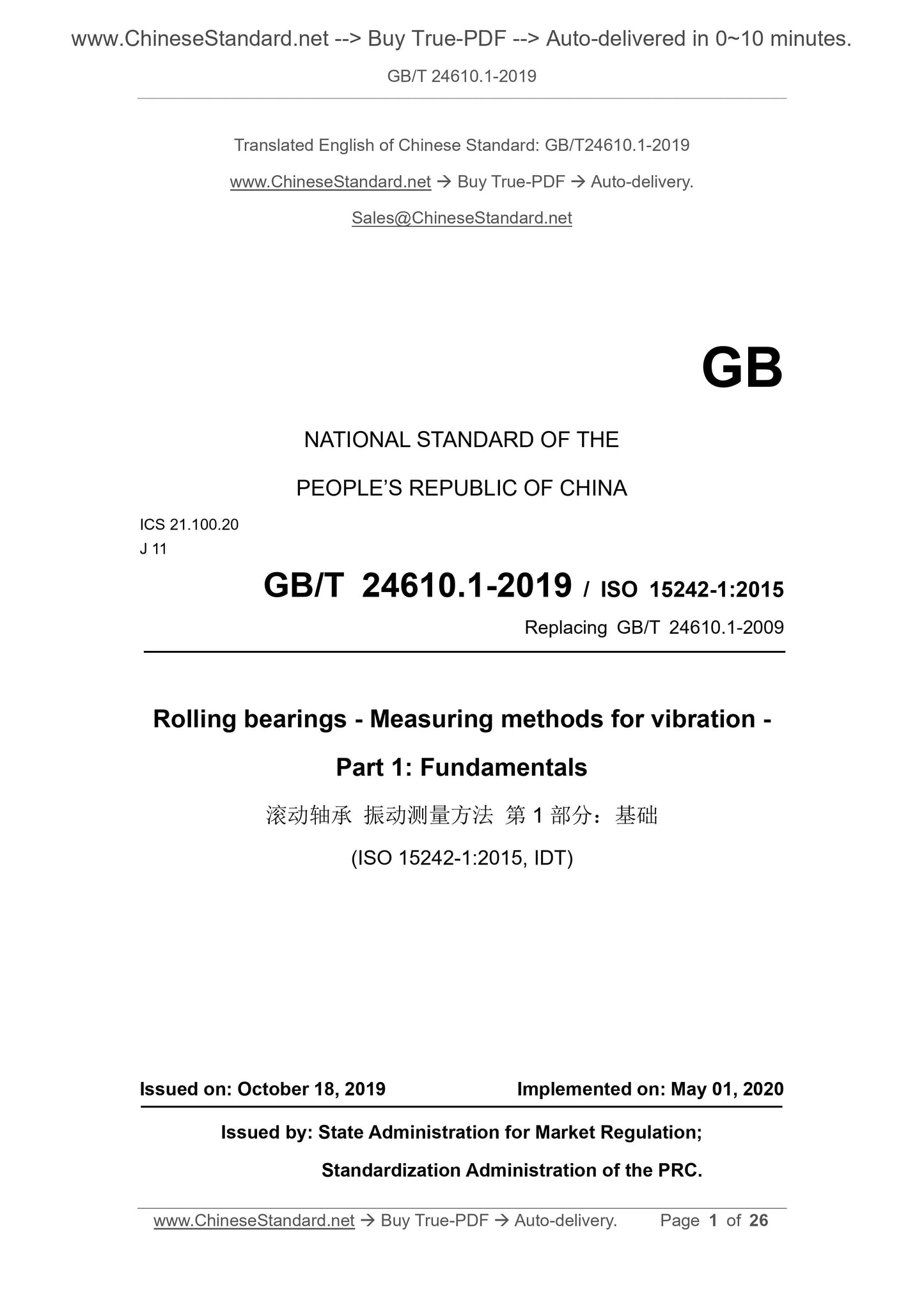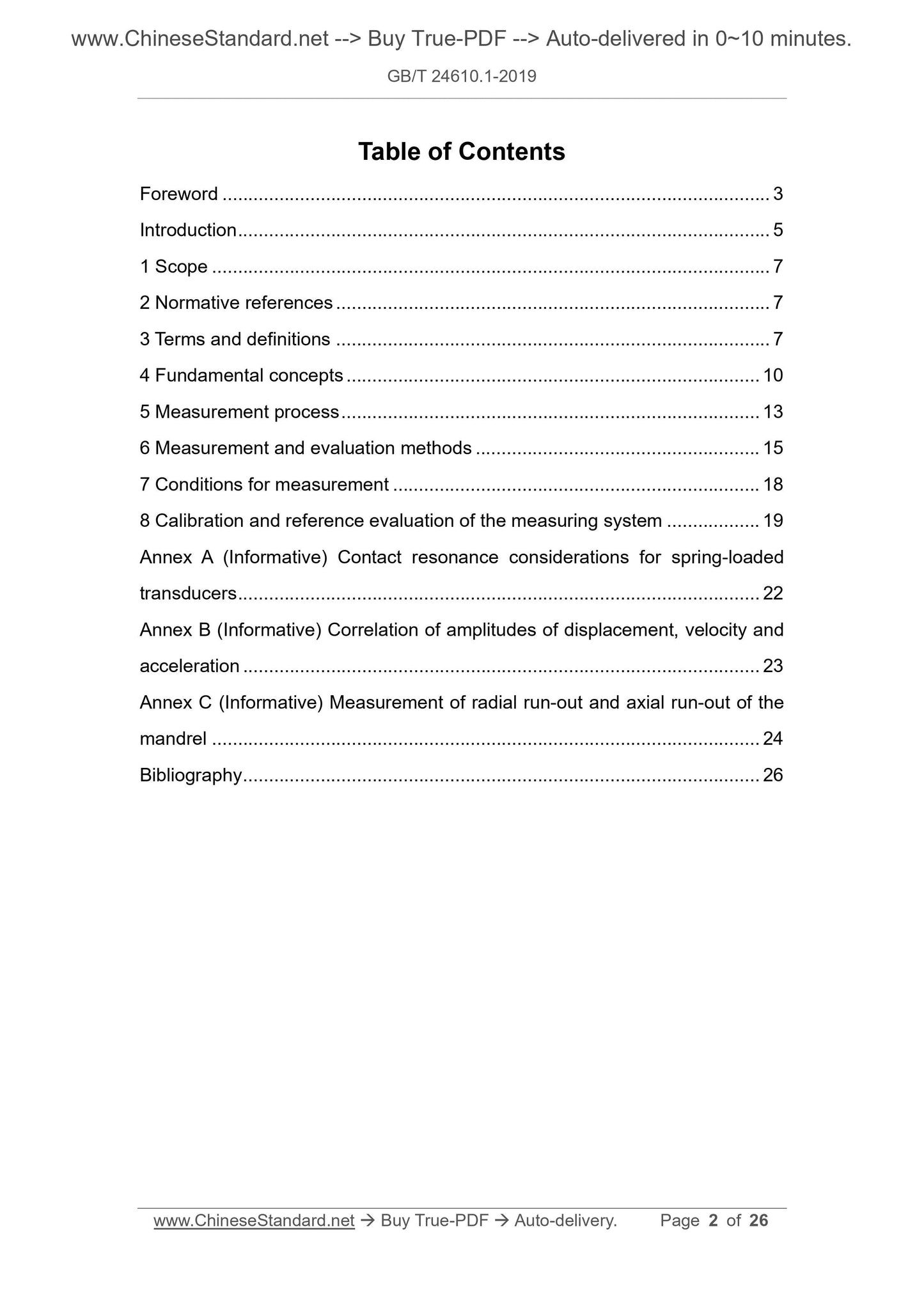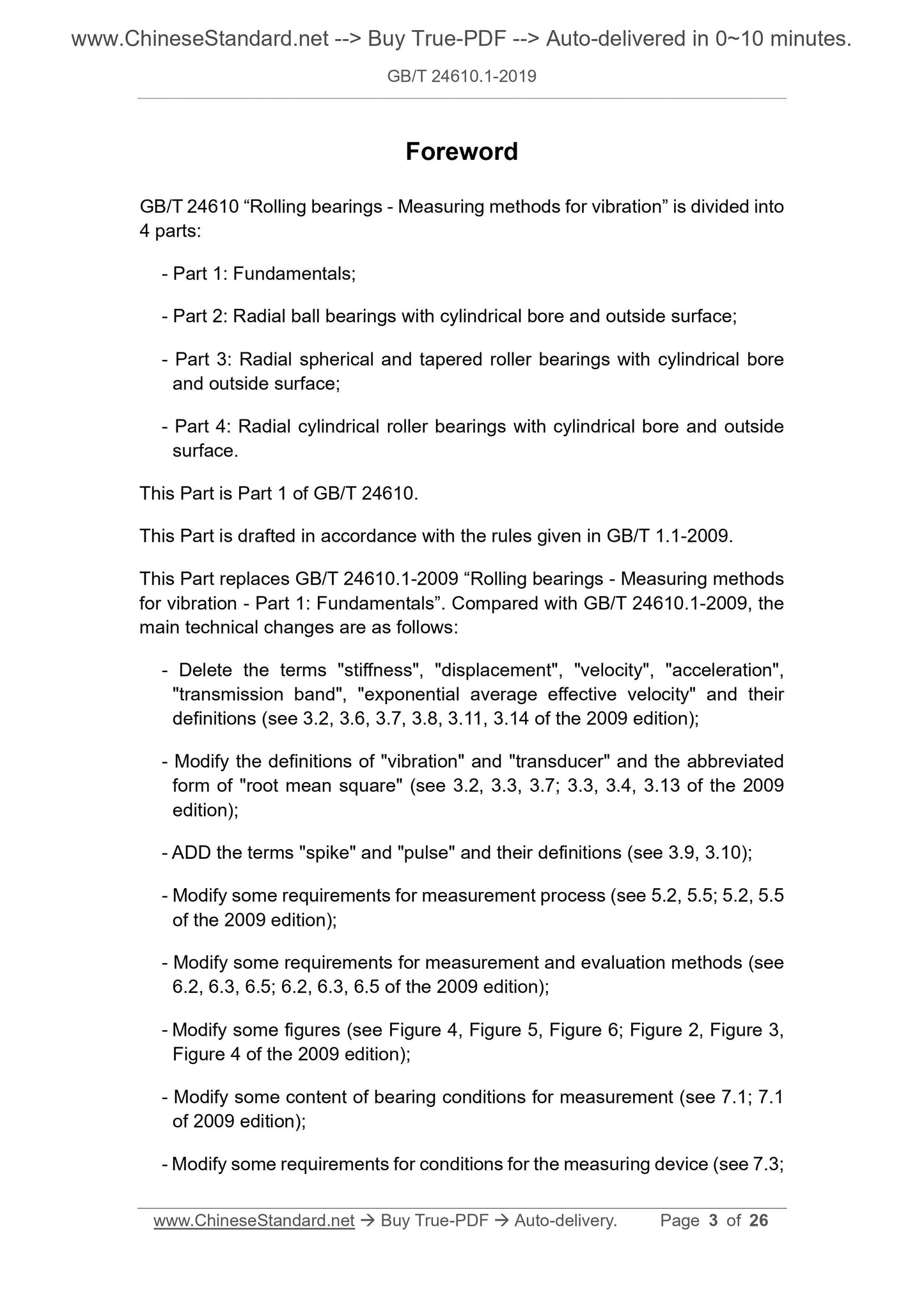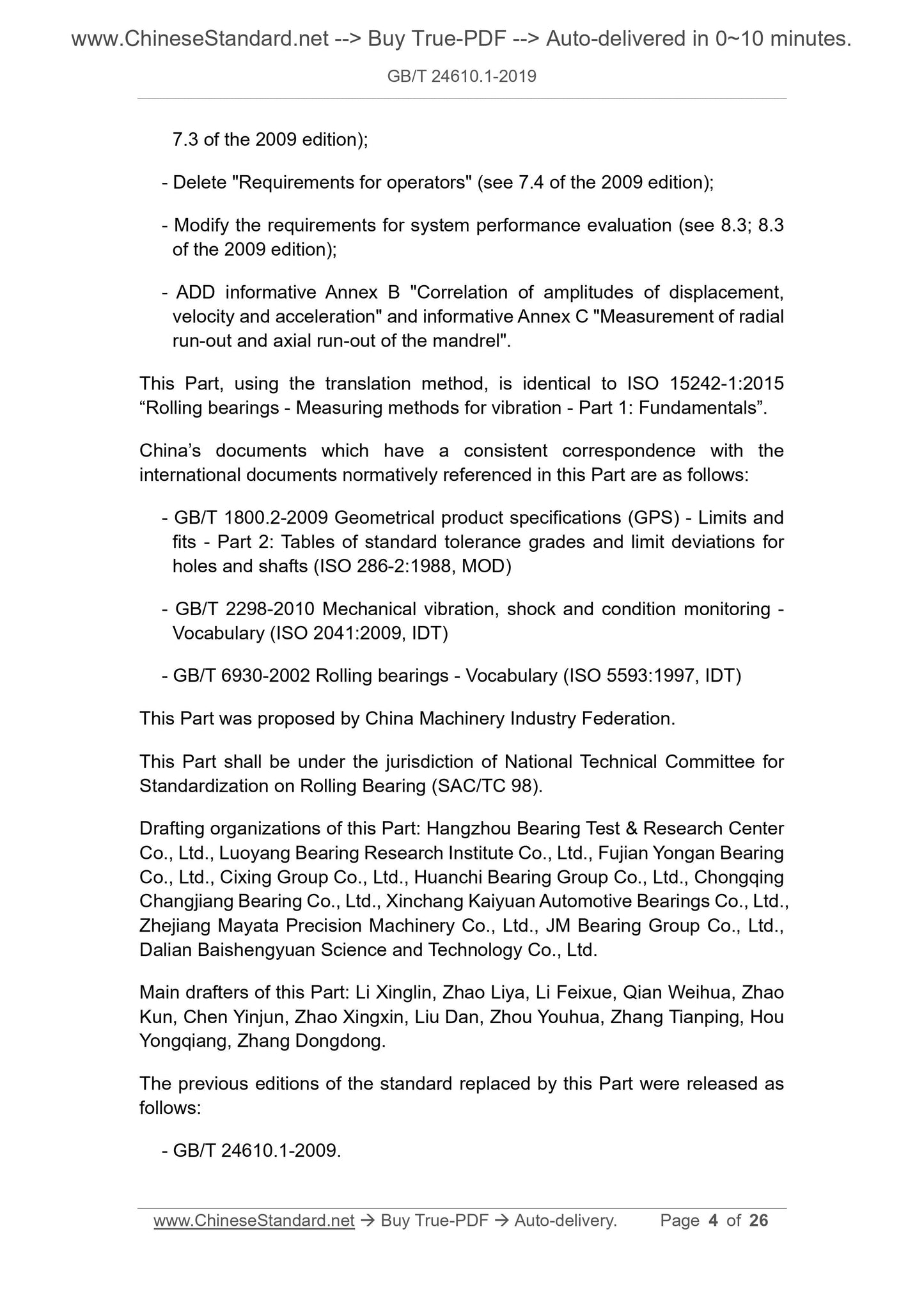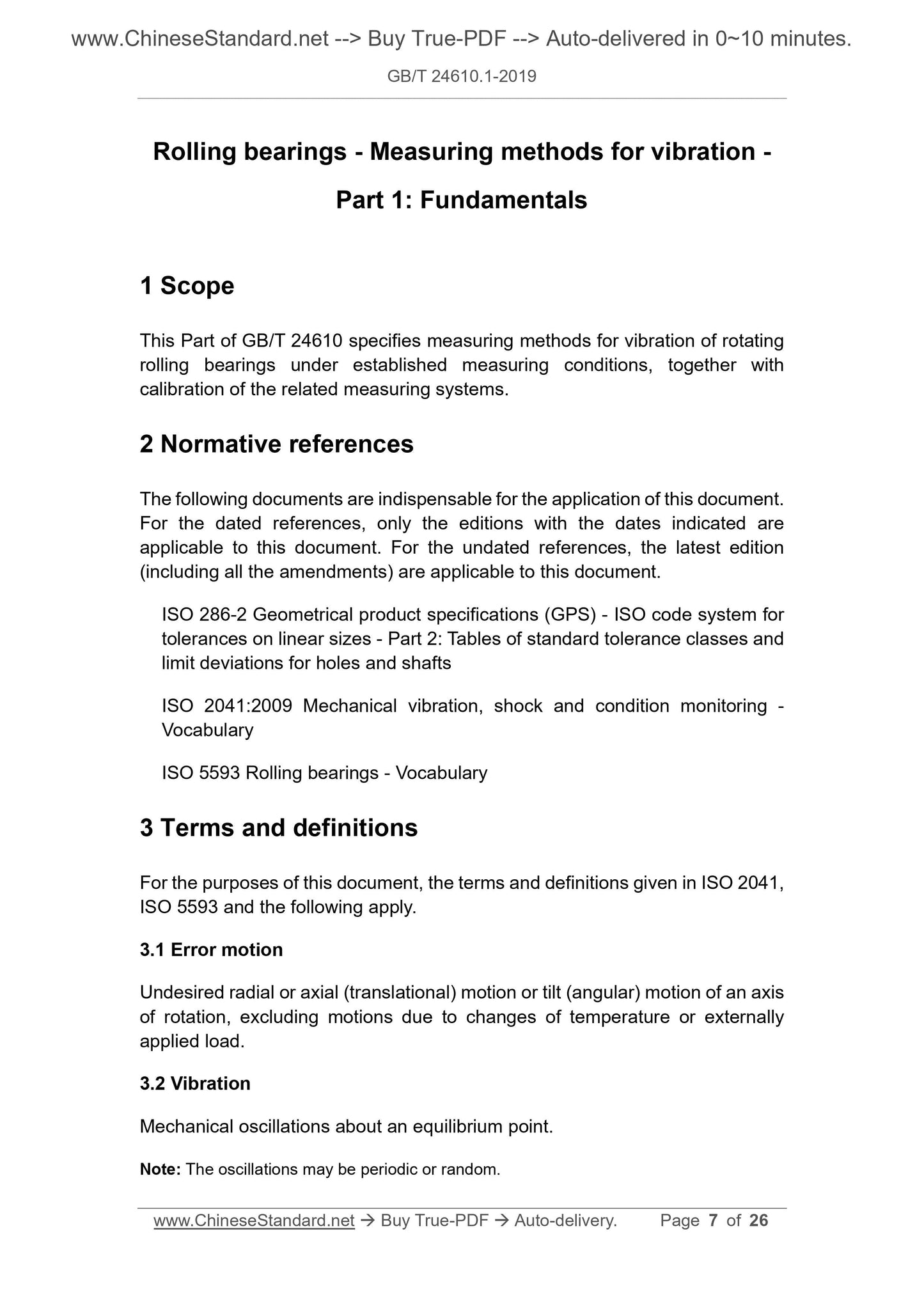1
/
of
5
www.ChineseStandard.us -- Field Test Asia Pte. Ltd.
GB/T 24610.1-2019 English PDF (GB/T24610.1-2019)
GB/T 24610.1-2019 English PDF (GB/T24610.1-2019)
Regular price
$255.00
Regular price
Sale price
$255.00
Unit price
/
per
Shipping calculated at checkout.
Couldn't load pickup availability
GB/T 24610.1-2019: Rolling bearings -- Measuring methods for vibration -- Part 1: Fundamentals
Delivery: 9 seconds. Download (and Email) true-PDF + Invoice.Get Quotation: Click GB/T 24610.1-2019 (Self-service in 1-minute)
Newer / historical versions: GB/T 24610.1-2019
Preview True-PDF
Scope
This part of GB/T 24610 specifies the vibration measurement methods of rotating rolling bearings under the established test conditions and relatedCalibration of measurement systems.
Basic Data
| Standard ID | GB/T 24610.1-2019 (GB/T24610.1-2019) |
| Description (Translated English) | Rolling bearings -- Measuring methods for vibration -- Part 1: Fundamentals |
| Sector / Industry | National Standard (Recommended) |
| Classification of Chinese Standard | J11 |
| Classification of International Standard | 21.100.20 |
| Word Count Estimation | 18,156 |
| Date of Issue | 2019-10-18 |
| Date of Implementation | 2020-05-01 |
| Issuing agency(ies) | State Administration for Market Regulation, China National Standardization Administration |
Share
